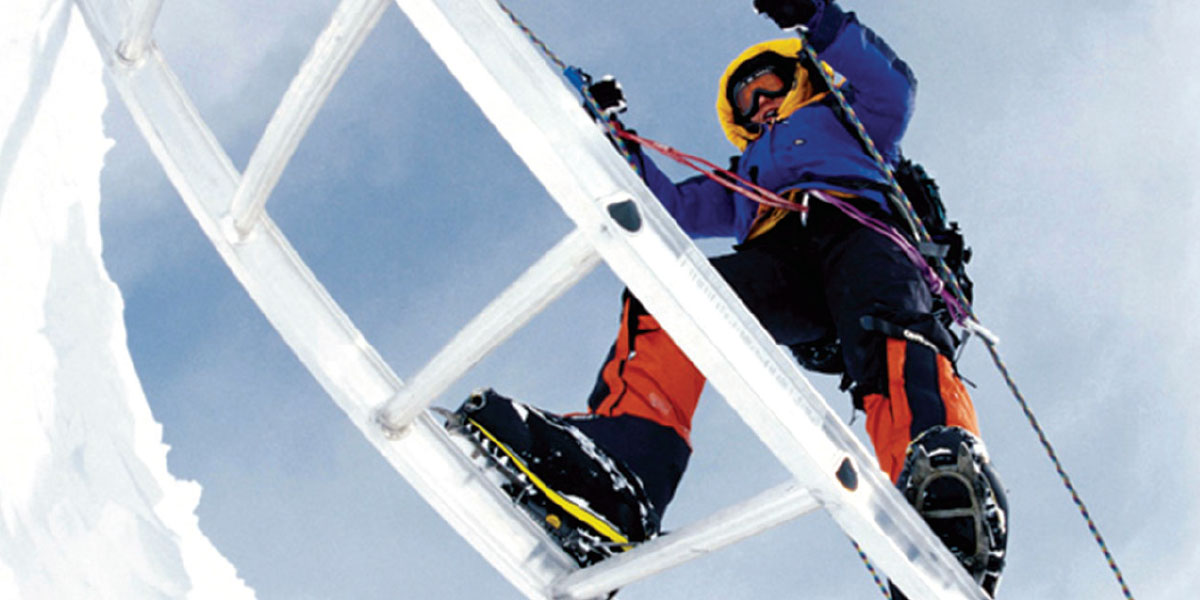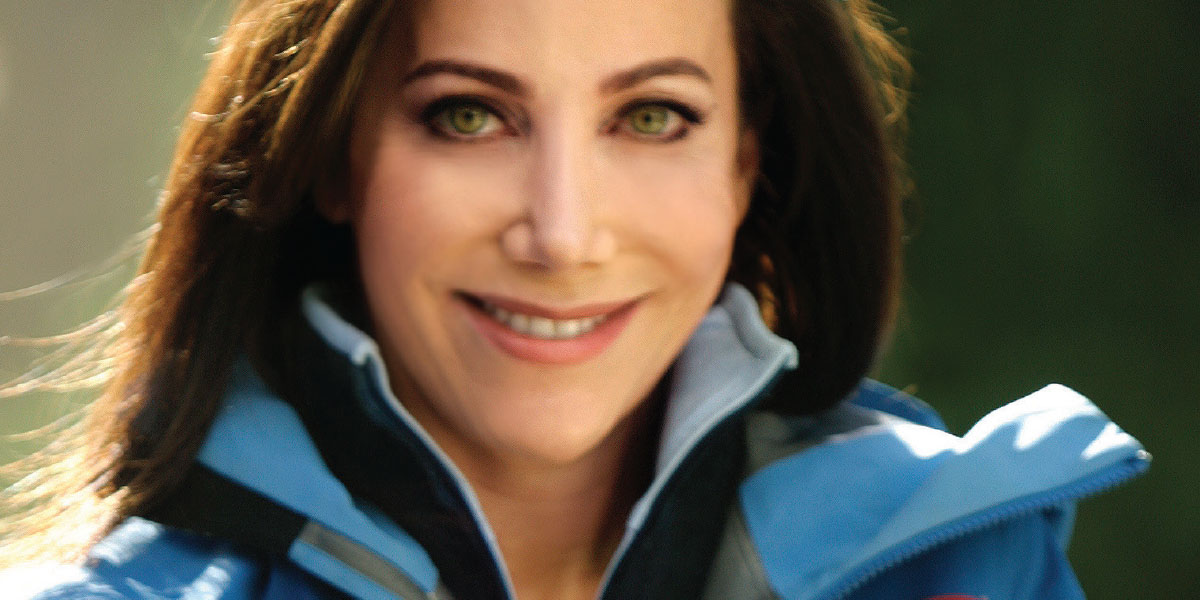
Edited by Linda Daily
What better place than Seattle to set the bar high? It’s in this city, which is set against the majestic backdrop of 14,410-foot Mount Rainier and bucolic Puget Sound that some legendary business icons have found their inspiration and made their mark.
Two decades ago, Jeff Bezos settled in Seattle to create an ambitious enterprise known as Amazon.com. Starbucks opened here in 1971 as a single store, inspiring Howard Schultz, current Starbucks chairman, president, and CEO, to eventually create a coffeehouse empire that now encompasses more than 18,000 stores in 62 countries.
The recently opened Bezos Center for Innovation at the Museum of History and Industry invites a closer look at how big ideas come to be. The cutting-edge vibe that characterizes Seattle has also found a unique expression at the EMP Museum—the venue of NACUBO’s opening event on Saturday night. The first commercial project in the Pacific Northwest designed by renowned architect Frank O. Gehry, the museum’s unique structure seeks to “evoke the rock ’n’ roll experience.”
Mount Rainier isn’t the only reason why Seattle invites visitors to keep their eyes on exciting vistas. While most are familiar with the Space Needle, an iconic hallmark of the city’s skyline, a more recent addition is the Seattle Great Wheel, which opened in June 2012. At 175 feet tall and featuring 42 fully enclosed gondolas seating up to eight people each, the observation Ferris wheel is the largest on the West Coast.
At this year’s annual meeting, which has the theme of “Scaling New Heights,” higher education leaders will have their choice of many treks from which to embark on an adventurous educational climb to reach the summit of professional excellence.

Join in Small Group Expeditions
Check the annual meeting Web site at www.nacuboannualmeeting.org to see a list of options for targeted learning opportunities in small group meetings.
- Roundtables and forums. These sessions offer unique opportunities for attendees to identify and share pressing challenges, explore potential solutions, and learn from the experiences of colleagues. Choose from the roundtables for senior leaders at comprehensive or small institutions, or community colleges. Topics include women’s issues, sustainability, and ways to serve minorities.
- Executive exchange for research universities. Designed exclusively for senior business officers at research institutions, these sessions offer an opportunity to engage in executive-level discussions about higher education and the strategic role of the CBO. Chief business officers at research universities will enjoy a lunch and speaker on Monday.
Explore New Learning Horizons
Once again this year, the guidance of NACUBO’s four constituent councils has resulted in a collection of concurrent sessions designed to provide insight into focused topics and ideas within the framework of the comprehensive annual meeting program. You can customize your learning experiences by selecting from a rich menu of presentations that target the needs of NACUBO’s primary member segments: community colleges, small institutions, research universities, and comprehensive and doctoral institutions.
Here is a brief sampling of the programs:
- Achieving the Best Debt Financing for Your Institution. Institutions are increasingly using private placement financing and banks loans as financing vehicles. Learn how to evaluate public versus private transactions, understand the trade-offs of public and private market financing, and gain new ideas to evaluate financing proposals.
- Enrollment Strategies. Discover effective recruitment techniques that provide strong ROI for every dollar invested and increase net tuition revenue. Discuss the findings from an annual national survey and identify the four critical factors that lead to enrollment growth and increased tuition revenue.
- Communicating Financial Data to Board Members. Learn how to develop easily understandable metrics that satisfy board objectives and provide the tools board members need to evaluate financial performance and resources. Discuss which financial data and ratios to use, ways to find standardized information for comparison, and which benchmarks work best for an institution.
- Funding Sustainability. An expert panel of sustainability and financial experts will discuss from both broad and specific perspectives ways to broaden leadership and funding mechanisms, and why the business office needs to be a part of this discussion.
- Connecting Traditional Space Planning to Capital Allocation Decisions. Examine how a university system comprising 31 institutions and some 70 campuses has struggled to connect traditional space planning approaches to capital allocation decisions. To better inform capital planning, the system formulated an innovative methodology for classifying space and measuring its utilization. Learn new methods, related data management strategies, and the system’s results.
- Protecting the Integrity of Nonfinancial Reporting. Learn about the numerous reporting requirements institutions face; the associated risks, management strategies and internal controls; and examples of how specific colleges and universities have handled their own situations.
- Creating a World-Class Administrative Function. Colleges and universities are seeking ways to improve administrative efficiency and effectiveness to decrease complexity, improve service, and lower costs. Learn about the opportunity areas that are most likely to yield real results. Find out how academic institutions and commercial organizations have tackled challenges to achieve meaningful administrative transformation.
- The Role of Performance Management in State Funding Decisions. As state budgets have tightened, public institutions have encountered increased scrutiny from state legislatures responding to concerns about the rising cost of higher education. In Texas, performance management metrics have been used as a methodology to dictate funding and direct dollars toward measured “outcomes.” While this is being implemented in a handful of states, the use of performance measures has been debated nationally. Learn to examine the trends in performance management.
- Transforming Financial Strategies for Academic Medical Centers. Declining government support for research and graduate medical education scholarships, along with the reality of the Affordable Health Care Act, has compelled universities with academic medical centers to transform the way they finance and plan. Learn how universities can develop long-term financial plans with creative financing strategies and targeted expense reduction.
- Using Predictive Analytics. Learn how a community college applied marketing theory and statistical techniques to available student data to provide higher-impact interventions to at-risk students while maximizing the impact of available funding for retention-related activities.
Experience Ascendant Leadership
This year’s general session speakers will share insights on how to be effective leaders and seize opportunities, while facing complex challenges. Bestselling author and famed mountaineer Alison Levine will talk about leadership lessons that she has learned from her success with leadership experts. Two other general session speakers will be announced soon. Keep an eye on your e-mail or visit www.nacuboannualmeeting.org for details.
Famed mountaineer and bestselling author. Alison Levine, a history-making polar explorer and mountaineer, and author of On the Edge: The Art of High Impact Leadership (Grand Central Publishing, 2014) will speak on Sunday, July 20 (see also “Flex Your Leadership Muscles” interview below).
Levine is an adjunct instructor at the United States Military Academy at West Point in the department of behavioral sciences and leadership, and a strategic adviser for the Thayer Leader Development Group at West Point. She not only served as team captain of the first American Women’s Everest Expedition, but also climbed the highest peak on each continent and skied to both the North and South Poles—a feat known as the Adventure Grand Slam, which fewer than 40 people in the world have achieved.
In January 2008, she made history as the first American to complete a 600-mile traverse from west Antarctica to the South Pole, following the route of legendary explorer Reinhold Messner. Levine’s success in extreme environments is noteworthy, given that she has had three heart surgeries and suffers from Raynaud’s disease, which causes the arteries that feed her fingers and toes to collapse in cold weather—leaving her at extreme risk for frostbite.
Levine has also spent more than two decades climbing the corporate ladder. She worked in the pharmaceutical and medical device industry, earned an MBA from Duke University, and worked at Goldman Sachs, which she left in 2003 to serve as deputy finance director for Arnold Schwarzenegger in his successful bid to become governor of California.
In 2005, Levine founded the Climb High Foundation, a nonprofit organization dedicated to improving the lives of jobless women in Africa by training them to be trekking guides and porters.
Levine currently serves on the board of the Coach K Center on Leadership and Ethics at Duke University. She has addressed audiences ranging from Fortune 500 companies to professional sports teams to the World Economic Forum at Davos, and she has appeared on the CNBC program, The Future of Leadership.

Carve Out Time for Festivities, Recreation
As you reach exciting new peaks of learning, don’t forget to take time to participate in the special entertainment, fitness, and networking opportunities NACUBO has planned to help you make the most of your stay. Here’s a look at what’s in store for attendees.
- Golf tournament. Join your colleagues on Saturday morning, July 19, at Harbor Pointe Golf Club for a challenging experience with two distinctly unique nines. The front nine, designed by Arthur Hills, winds through wetlands with water in play on every hole, while the back nine is set among rolling hills, framed by evergreen trees with views of Puget Sound and the Olympic Mountains.
- A rockin’ opening celebration. Catch up with old friends and meet new colleagues at the exciting opening event at the EMP Museum, a nonprofit museum dedicated to contemporary popular culture. The unique museum is home to exhibits, interactive activity stations, sound sculpture, and various educational resources.
- NACUBO Fitness and 5K. Keep up your exercise routine with fitness options each day of the annual meeting. On Tuesday morning, July 22, participate in the 5K fun run at Myrtle Edwards Park.
- First-Timer Attendees Breakfast. First-time attendees are invited to this special breakfast on Sunday, July 20, where they will learn how to navigate the many happenings at the annual meeting and get to know their colleagues and NACUBO leaders.
- Community College Lunch and Educational Session. Join your colleagues from community colleges across the country on Sunday to share experiences and examine solutions.
- Happy Hour in the Expo. Take time to join vendors and attendees for refreshments in the exhibit hall on Sunday evening, July 20. Tour the exhibits and take advantage of this additional time to connect with representatives from companies that offer products and services to campuses.
- Awards reception. Award recipients and their guests are invited to this reception on Sunday, July 20—honoring individual and institutional excellence. Attendance is by invitation only.
- Primary Representatives’ Meeting. The primary representatives of eligible NACUBO member institutions are invited to a meeting on Monday, July 21, to discuss the important business and financial matters facing NACUBO and higher education. Attendance is by invitation only.
- Constituent Networking Opportunities. Meet individuals at similar institutions to share your unique challenges and opportunities. In addition, sessions will be held throughout the program designated to be of special interest to constituent groups.
- Campus tour. On Tuesday afternoon, July 22, take a tour of the University of Washington, Seattle. Founded in 1861 by a private gift of 10 acres in what is now the heart of downtown Seattle, UW is one of the oldest public universities on the West Coast.
Corporate Showcases Enhance the Overall Program
Eight corporate showcases offer new solutions to a variety of issues. Focused on a number of topics, these sessions will be integrated with the rest of the conference so that attendees can catch several throughout the annual meeting. Advance sign-up is not necessary. A schedule of the following showcases will be included in the on-site program.
- Ellucian—Actionable Metrics: KPIs for Your Institutions.
- Xerox Corp.—A New Way of Thinking: Document Life Cycle Strategies.
- Deloitte Consulting LLP—Successful Transformation to a World-Class Administrative Operation.
- TIAA-CREF—The Next Generation of Retirement Plan Success Metrics.
- Witt/Kieffer—The Great Communicator: The Evolution of the CFO.
- J.P. Morgan Asset Management—Managing Complexity: Governance and Fiduciary Responsibility.
- Attain LLC—An Examination of Financial Health Using Powerful Analytics.
- Russell Investments—Drawing the Line: Managing the Role of Your Investment Committee When Working With an Outsourced Investment Provider.
- Scaling New Heights
For more information and to register for the NACUBO 2014 Annual Meeting, visit www.nacuboannualmeeting.org.
LINDA DAILY, Falls Church, Virginia, is a contributing editor for Business Officer.
Flex Your Leadership Muscles

A person cannot control the environment, but only his or her reaction to it. So notes mountaineer and polar explorer Alison Levine, who will bring to her keynote address in Seattle insights on leadership from her success with extreme sports—and the corporate ladder.
By Marta Perez Drake
 Nothing like honing your leadership skills on the icy crags of Mount Everest. That’s one of the many dangerous feats from which Alison Levine, team captain of the first American Women’s Everest Expedition, in 2002, has drawn her conclusions on effective leadership. Levine has also survived Mother Nature’s wrath as a climber of the highest peak on each continent (the Seven Summits), and the first American in history to complete a 600-mile traverse on skis from west Antarctica to the South Pole.
Nothing like honing your leadership skills on the icy crags of Mount Everest. That’s one of the many dangerous feats from which Alison Levine, team captain of the first American Women’s Everest Expedition, in 2002, has drawn her conclusions on effective leadership. Levine has also survived Mother Nature’s wrath as a climber of the highest peak on each continent (the Seven Summits), and the first American in history to complete a 600-mile traverse on skis from west Antarctica to the South Pole.
The keynote speaker for the opening general session at the NACUBO 2014 Annual Meeting in Seattle, July 19–22, Levine has tackled some of the most challenging environments in the outdoors. What better background to kick off this year’s meeting theme, Scaling New Heights?
Levine has not only survived and continued to make sports history; she also serves on the board of the Coach K Center on Leadership and Ethics (COLE) at Duke University; works as an adjunct instructor at the United States Military Academy at West Point; and is a strategic adviser for the academy’s Thayer Leader Development Group, an executive education program that shares West Point’s leadership best practices with senior-level executives from the public and private sectors.
One of COLE’s concepts, Developing Leaders of Consequence, resonates with Levine: COLE produces entrepreneurial leaders of exceptional character, ethically grounded, and possessed of a global mind-set. These leaders will inspire their followers to meet and exceed an organization’s goals through actions that are, at one and the same time, highly productive and highly ethical, while continuously serving the best interests of all the organization’s stakeholders.
With more than two decades spent climbing another formidable edifice—the corporate ladder—Levine has worked in the pharmaceutical and medical device industry, earned an MBA at Duke University, and spent three years at Goldman Sachs.
In 2005, she founded the Climb High Foundation, a nonprofit organization dedicated to improving the lives of jobless women in Africa by training them to be trekking guides and porters in their local mountains. Her work in Uganda, subject of the PBS documentary “Living Courageously,” included enabling the first group of local women to make history by climbing Uganda’s highest peak, Mount Stanley.
Levine combines the lessons learned from both indoor and outdoor challenges in her new book, On the Edge: The Art of High-Impact Leadership (Grand Central Publishing, 2014). In an interview with Business Officer, Levine explains some of the book’s central themes: creating cohesive teams, recognizing the value of preparation, and developing no-nonsense leaders who can succeed in times of uncertainty.
Everyone Is a Leader
Levine takes somewhat of a 360-degree approach when it comes to leadership. “Leadership is everyone’s responsibility,” she says. “It is not solely the responsibility of the C-level executives or the management team within an organization. We are all in a position to proactively work toward having a positive effect on the people around us.
“Everyone in an organization is responsible for helping to move forward with the mission; but in addition, all employees/teammates/people must realize that it is also their responsibility to look out for the people on either side of them, and to help those people move in the right direction as well.”
Underscoring this approach is the idea of asking other people to switch off and take a turn as leader on particular days. “I think everyone on a team needs to be empowered to think and act like a leader,” says Levine. “That type of trading off really helps people understand that it’s everyone’s responsibility to lead.”
The leaders Levine finds most intriguing, she says, are those who “enable teams to survive and thrive in extreme environments.” It requires the willpower, teamwork, high moral character, and emotional intelligence to solve complex problems, including those that exist in today’s business world. The global economy, she says, “is more unpredictable than ever, and we each have more on the line as we try to navigate its shifting terrain. The potential costs of a mistake—whether professional, monetary, or emotional—can be high if we do not make the right choices.”
Levine suggests a multipronged mind-set for leader and team.
- Develop your leadership skills in a deliberate, conscious process. “Think about how much time and energy people spend on achieving optimal physical health,” she says, “yet few people put the time and effort into strengthening their leadership skills. Just as building muscle strength requires a repetitive routine, the more time you spend focusing on your leadership skills, the stronger they will be.”
Levine suggests that academic or business leaders consider a change in environment when looking for professional development. For example, she says, participating in a program at the Thayer Leader Development group at West Point provides access to customized programs for mid- to senior-level managers and gives participants a taste of “leadership the West Point way.” Between the academy’s leadership development group and other attendees from various organizations and locations, “they’ll gain exposure to people they would not normally come across in everyday business dealings.”
- Consider ego as a good trait. While ego is often viewed as arrogance, Levine describes the positive outcomes of team ego, in which the leader populates the group with individuals who have strong, healthy performance egos of their own and can also buy into what the team is doing together—forming a collective identity. “Who we are as a team trumps who any of us are as individuals,” she says.
In assembling your athletics or work teams, says Levine, you want people whom you know are good, and you want people who are proud to be a part of the team. “When I selected the Mount Everest team, nearly everyone I talked with in telephone interviews was clearly qualified to make the climb. But, one of the key things I looked for was enthusiasm and motivation. This is an example of looking for that effective combination of performance ego and team ego.”
- Manage through limitations. “Everyone has got to find an area where they can add value to a team. And, it’s really up to the team leader to help each person find that sweet spot. So, for me, because I’m smaller, I’m not going to be able to haul as much weight when it comes to supplies and equipment for a climb. But I could use, for example, in Antarctica, a snow shovel more efficiently, because the shovels are very small. And, taller people are going to wrench their backs using a short shovel. That was an area where I could contribute.
“So, you want to have people on your team who are going to be creative and figure out ways to contribute, but ultimately, it’s the leader’s responsibility to help that person find his or her sweet spot.”
- Learn from others. “I think it’s important, when you’re part of any team, to stop and learn from the people around you, whether it’s the local Sherpas on a climb or the other people on your team,” says Levine. “Leaders need to be able to lead, and leaders need to be able to step back and let other people lead.”
For business officers, a large percentage of whom plan to retire within the next several years, Levine’s advice is to begin—or continue to—empower the rest of the people in the department to think and act like leaders in the areas that are appropriate for their particular positions.
“That way,” she says, “when it’s time to retire, you’ll have several qualified people who have already been stepping up to larger roles, know what it’s like to fill those shoes, and what it’s like to be the person who has to make the tough decisions. And, you have people who are used to looking out for the individuals around them, making sure they’re on the right track and moving toward the institution’s goals.”
Prepare to the Max
“It doesn’t matter what you’ve done on a past expedition; all that matters is how you are performing on the mountain right now,” says Levine. Whether climbing a mountain or preparing for a crucial business meeting, she elaborates in her book, crucial moments arise when on-the-spot decisions must be made in reaction to the current circumstances. Notes Duke University’s head coach Mike Krzyzewski in the book’s foreword, “This is perhaps one of the most important lessons that business leaders can learn from sports leaders, and vice versa.”
The way you react to something in the moment, he continues, “will depend heavily on the way in which you prepare to face [similar] challenges.”
- Practice like you mean it. One of Levine’s preparation techniques that others might perceive as particularly extreme: Simulate the conditions that will challenge you. Translate this to mountain climbing and it means conditioning yourself for the times when sleep is not an option. “It’s usually the stress of not sleeping that works against people more than the deprivation itself,” contends Levine. “So, if you practice sleep deprivation, at least you won’t be stressed and sleep deprived when the next all-nighter comes along.”
Levine doesn’t limit this particular practice to extreme sports. “In business, you may have made a commitment to deliver something; your schedule didn’t work out as planned; and you need to stay up all night to make it happen. Or, for the business officer, you may face a crisis situation on campus that calls for round-the-clock attention. You don’t ever want to fail because you were too tired,” cautions Levine.
In general, says Levine, “Regardless of what you have planned, you have to take action based on the situation at the time. And, then, the other piece of advice is just to make decisions based on what’s best for the people around you—your team—rather than what’s best for you.”
- Don’t go solo. Levine acknowledges that training can feel monotonous and sometimes lonely. “Find yourself some training partners,” she recommends, “not just for company that will make it more fun, but because it will help improve your skills.”
Whether in an athletics situation or a campus setting, it’s preferable to train with people who can withstand pressure and who will push you to do the same. And, similarly, whether you’re trying to become a better climber or a stronger financial officer, one of the best things you can do, says Levine, is to find mentors and spend time with them. “Don’t wait for mentors to come to you—seek them out. Pick people whom you respect and admire, and ask them if you can observe what they do and work alongside them.”
One perhaps counterintuitive piece of advice: “Don’t just look for people who are senior to you. Find ambitious people who are junior to you … you will learn a lot from them as well.” Levine finds this true in her dealings with the West Point cadets, her work with whom has “probably been the favorite thing I’ve ever done professionally. I learn so much from the cadets and also from my fellow faculty members. One thing I find interesting is that they [the cadets] have additional aspects to their overall education—leadership training, physical fitness, and military training—that I never had exposure to when I was in school.”
Levine also wants to instill in the cadets the larger reach of leadership. “I want them to realize,” she says, “that they must think and act like leaders not only when they are at West Point or when they are fulfilling their first military assignments, but the leadership lessons they learn at the academy should stay with them forever—in every aspect of life.”
In Uncertain Times, Dare to Fail
When it comes to establishing an organizational culture that is not risk-averse, Levine says that such an attitude really has to come from the leadership, who must create a culture of failure tolerance that will encourage people to take bigger risks. “I think people will take on more challenge and take bigger risks and make more progress in certain areas, if they’re not so afraid of failing. And, a lot of times, it’s other people’s failures that spur future success. So, even if we stumble and fail, that failure could end up helping the people coming up behind us.”
Levine also notes: “We tend to celebrate success so much. And, we often forget about the people who tried and failed. Look at people who run for office, and want to make a difference in their communities, or in their state or in their country. One person’s a winner, and the other person is just the losing candidate, right? And, they get no credit for anything.
“We see everything in such a black-and-white way. In the Olympics, this person won the gold medal; this person lost the gold medal—instead of talking about how the person won the silver or the bronze by competing fiercely and fairly. For whatever reason, we’re so focused on success at a certain level; it’s a shame that we tend to discount everything else. Social media makes it worse, because it allows people to hide behind the Internet and criticize and spew negativity.”
What’s next for Levine? “Right now, I’m concentrating on the book tour and loving the opportunity to spread the word about the lessons I’ve learned from so many leaders in sports, industry, and the military,” she says. Obviously, leaders have unlimited mountains to climb and challenges to conquer. For example, Levine hasn’t tackled Hawaii’s Mauna Kea, which, if measured from its base in the Pacific Ocean, is technically the highest mountain on earth. Levine says that, like other leaders, she has certain priorities. “This isn’t on my bucket list. If I’m going to Hawaii, I’m going to sit on the beach and relax—not go climbing!”
MARTA PEREZ DRAKE is vice president, professional development, at NACUBO.



